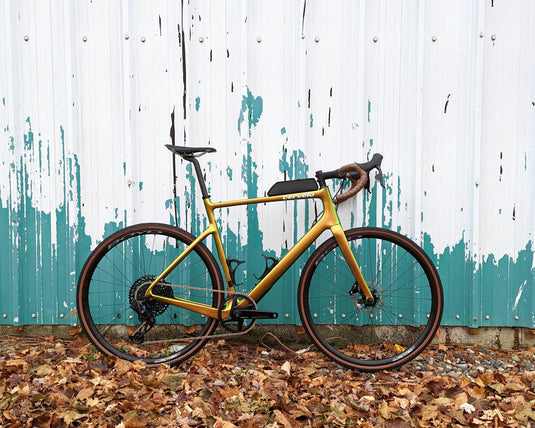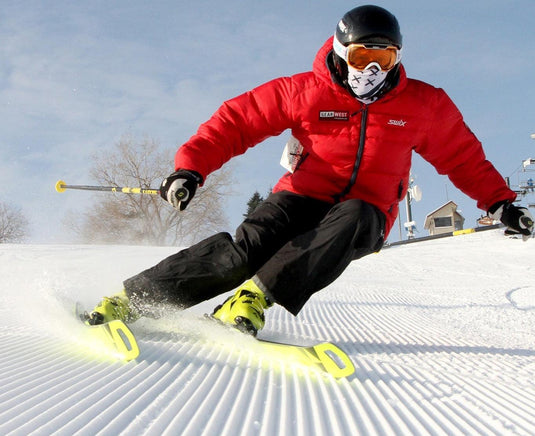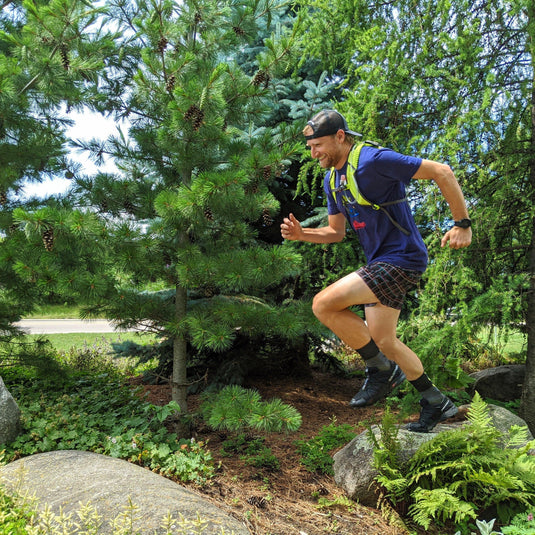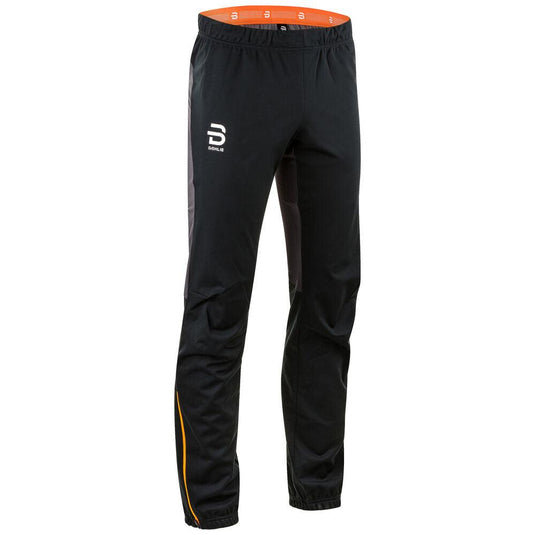Rollerski 101

How to rollerski
Ski training during the summer and fall is critical to improving cross country ski technique and fitness. Rollerskiing is an important part of a well-rounded summer program because rollerskis do an excellent job imitating on-snow training. Like skiing on snow, rollerskiing exercises arms, legs, core and improves cardiovascular fitness. Rollerskiing is also great training for injured runners who are looking for an alternative low-impact, weight bearing workout.
The saying “Skiers are made in the summer” is absolutely true because winters aren’t long enough to get all the workout time in to build the base needed to improve at an endurance sport like cross country skiing. So skiers need to rollerski in the summer, along with strength training and running/pole hiking, to get the work in to build their base and develop technique.
Rollerski Tips
Pick One: Skate or Classic
Skate rollerskis are identified by having shorter shafts and narrower wheels with larger diameters than classic rollerskis. Classic rollerskis are longer, have wider wheels and smaller diameters for easier balance with a ratchet in either the front or rear wheel to provide kick.
Simply select the technique you would like to improve in. Skate if you want to improve your strength and technique for skate or classic if that is where you want to improve. If you are unsure, the rule of thumb is — practice good skate technique on rollerskis before classic. Skate skiing on good rollerskis, whether it’s V1, V2 or open field, imitates all aspects of on-snow skate skiing. Classic rollerskis are perfect for developing the arms and core strength needed to improve on-snow classic performance, but their "perfect kick" can lead to learning poor kicking form. Getting a kick while striding on snow requires strong technique, including good weight transfer, and this is not necessarily a requirement for classic rollerskiing.
How About Combi Rollerskis?
Only a combi ski can be used interchangeably between techniques, and allows an individual to practice both skate and classic. The combi design is essentially a short classic rollerski. When used for skating the wheels can wear unevenly if they aren’t rotated often. They also don’t skate as easily as a skate specific rollerski. When climbing hills, the fatter wheels tend to have a harder time angling to accommodate the skate technique without the wheel bolts brushing the pavement. Also, when combi skis are used for classic skiing, guides need to be attached to the tip of the ski to prevent the front of the rollerski from catching on the ground while striding. Our suggestion is to choose either a dedicated classic or skate rollerski.
I chose my technique - now which rollerski do I pick?
Elite skiers almost always select lightweight rollerskis with hard rubber wheels designed for smooth surfaces, with either with an aluminum or composite shaft depending on the intensity and length of the workout. In general, aluminum rollerskis are more durable but are less effective at absorbing road vibration, while composite rollerskis provide the most realistic "snow feel," but can break if repeatedly bottomed out.
Skate Rollerskis for Smooth Surfaces
Classic Rollerskis for Smooth Surfaces
- Swenor Carbonfibre Classic
- Swenor Finstep Classic
- SWIX TRIAC Carbon Classic Ski
- SWIX Classic Roadline C2
Rollerskis for Rough Surfaces
V2 makes rollerskis with wide inflatable tires for a smooth ride on nearly every surface.
New skiers, older skiers, or skiers who are worried about falling may love the V2 rollerski line because of the added stability of the inflatable Aero wheels and all the cool breaking gadgets they can add to any of the rollerskis in the V2 line. The V2 design offers the ability to add brakes and/or speed reducers to the wheels. Speed reducers operate with a little lever, which the skier presses down to engage a bearing against the rollerski wheel for added resistance to slow the ski. A brake acts more like a normal brake. Leaning back will engage the calf which in turn activates the break. Leaning back more aggressively adds more pressure and quicker breaking.
Additionally the V2 Aero line is designed with wider and taller wheels to handle skiing on bumpy terrain. These skis roll over grass and gravel and are fun to cruise on crushed limestone trails. The Aero 125 is designed for skiers under 150 lbs. The wheels have inner tubes and should be kept inflated with a bicycle pump. The V2 150 Aero is designed for larger skiers or those looking for the ultimate in stability on bumpy terrain.
What Other Equipment is Needed?
Bindings
Rollerskis use the same bindings as regular snow skis. Skate boots need skate bindings and classic boots require classic bindings. Either the mid-priced bindings (such as the Salomon Sport Pilot) or the performance bindings (Salomon Pilot Skate) can work. Inexpensive touring bindings are not recommended as they use less expensive plastics that will crack under continual rollerski use.
Boots and Poles
Many newer skiers and rollerskiers may use the same boots and poles for both rollerskiing and snow skiing. The nature of rollerskiing makes it very hard on equipment, however, so most serious skiers will eventually dedicate a second set of equipment specifically to rollerskiing. In any case, poles should have their snow baskets replaced with a set of carbide rollerski ferrules. Also notable: ski boots can be very warm to wear during the summer, so some boot companies sell more breathable rollerski versions of their boots.
Safety Equipment
Finally, it is vital to wear some safety equipment to protect yourself in the event of a crash. The most important of these is a helmet. Most rollerskiers use a standard bike helmet, though any similar helmet will work. In any case, you should always wear some sort of head protection when you are snapped into your rollerski's bindings.
Rollerski gloves are also used to protect hands from abrasions and blisters. Gear West carries rollerski gloves from Bjorn Daehlie, Toko, and Lill Sport. Finally, knee pads can be added for even more protection, although generally knees won't hit the ground even if you do fall. Wrist guards should not be worn because mobile wrists are needed to rollerski.
Safety Advice
With practice and care, rollerskiing can be a low risk, high reward method of exercise. It is very low impact and can be done for hours at a time without beating up your body. It is important, however, to acknowledge that like with all things worth doing, there ARE risks. Crashes are a possibility and you must respect that and keep your safety in mind at all times. To help you stay safe, keep the following advice in mind as you begin rollerskiing.
- Wear appropriate protective gear with respect to your coordination, fitness and terrain. ALWAYS wear a helmet.
- To start, choose a location that is flat, clean of debris and has minimal car traffic
- Learn how to stop on rollerskis and practice this skill. You can view our Rollerski Basics video for instructions on stopping.
- Use good equipment. Start with new rollerskis. Old, worn wheels can be less stable and older bearings may not run as smoothly as they should. Also, old rollerskis may have been damaged in a way that affected the alignment of the wheels.
- Use boots which provide good stability. For example, do not use touring boots for classic skiing as the sole is too soft and will twist under pressure. Similarly, low-end combi boots for skating won’t provide you the stability needed for balance. Ankles will wobble and you will risk falling.
- Regularly sharpen roller ferrules so pole tips will give you good purchase into the asphalt. This is particularly important on cold/hard pavement.
- Get coaching. Learn good habits before you have to unlearn bad ones.
- Watch this video to learn the movements you are trying to perfect.
Questions? Call or email us!
(952) 473-0377
info@gearwest.com





